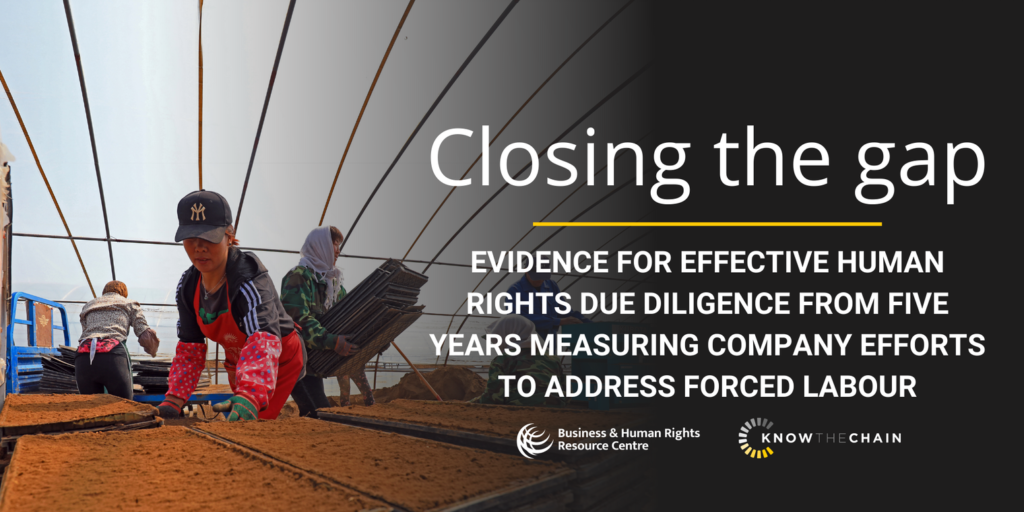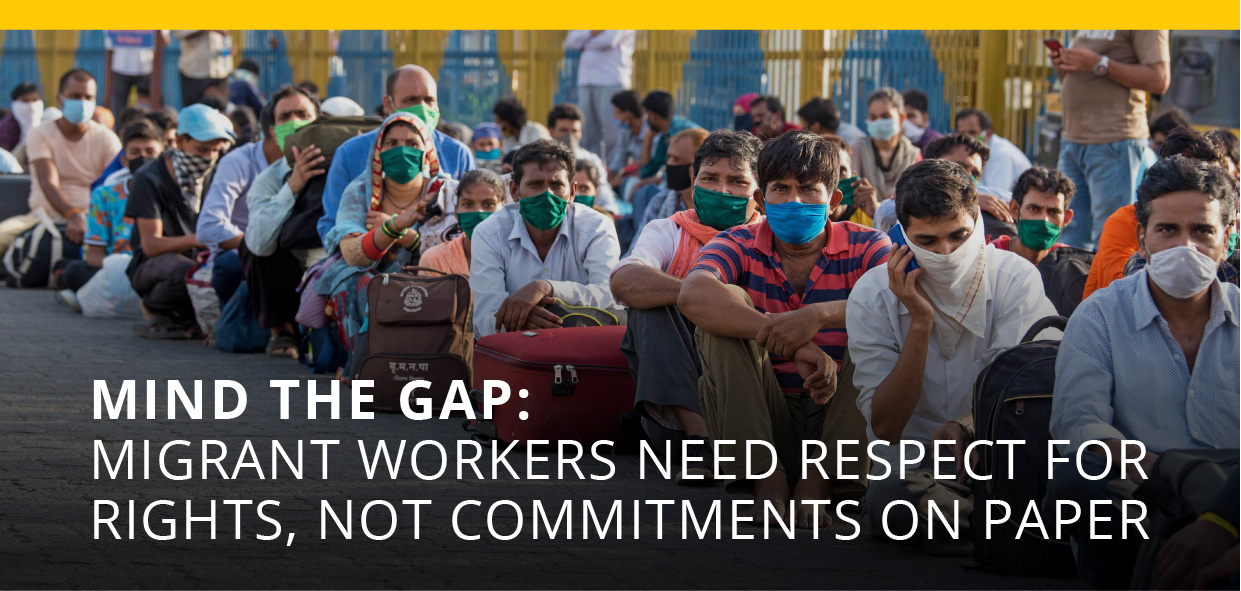Company Resources

KnowTheChain 2023 F&B Benchmark Findings
KnowTheChain 2022 ICT Benchmark Findings
KnowTheChain benchmark methodology 2022-2023

HOW WE WORK WITH YOU
We provide companies with the knowledge and tools necessary to understand the issue and appreciate how their actions to address forced labour compare to others in their field. We do this through our signature benchmark reports, our resources page, and ongoing engagement with stakeholders.
ADDITIONAL RESOURCES
See the latest reports and news from KnowTheChain to help companies all over the world improve their labour practices.
Closing the gap: Evidence for effective human rights due diligence from five years measuring company efforts to address forced labour
Mind the Gap: Migrant Workers Need Respect for Rights, not Commitments on Paper (2021)
With a focus on recruitment fees, this briefing examines the commitments companies make and the steps they take to ensure that migrant workers’ rights are respected.
2021 Apparel and Footwear Sector Benchmark
Read our assessment of how the largest apparel and footwear companies are responding to forced labor in supply chains. […]
Read More… from 2021 Apparel and Footwear Sector Benchmark
Read PDFKnowTheChain Apparel & Footwear Benchmark – Explore our Findings
Explore our findings by Region: Company due diligence efforts of companies in Asia, Europe, and North America. Subsector: Explore who is leading and lagging among apparel retailers, footwear companies, and luxury brands. Raw Materials: From bamboo, to cashmere and cotton—explore which raw materials may be produced with forced labor and to what extent companies are […]
Read More… from KnowTheChain Apparel & Footwear Benchmark – Explore our Findings
Read ArticleImprove Recruitment
Mind the Gap: Migrant Workers Need Respect for Rights, not Commitments on Paper
[…]
Read More… from Mind the Gap: Migrant Workers Need Respect for Rights, not Commitments on Paper
Read ArticleImprove Traceability & Risk Assessment, Incorporate Worker Voice, Remedy Abuse
Addressing Forced Labor Risks in Lower Tiers of Electronics Supply Chains – Examples of Company Practice
While many companies fall short when it comes to addressing forced labor risks in lower tiers of their supply chains, there are examples of company practices from the ICT sector and beyond that demonstrate that managing forced labor risks across supply chain tiers is feasible—and how it can be done. Approaches include Supporting suppliers to […]
Read ArticleLearn About Forced Labor Risk
Addressing Forced Labor Risks in Supply Chains: Risk Exposure and Efforts Undertaken by Asian Food & Beverage Companies
In its third benchmark on the sector, KnowTheChain assessed 43 of the largest global food and beverage companies, including seven Asian companies, on their efforts to address forced labor in their supply chains. This report focuses on the findings of Asian companies. […]
Read PDFCollaborate, Develop Commitments & Governance, Enhance Monitoring
2020 Food and Beverage benchmark findings report
KnowTheChain assesses the 43 largest global food and beverage companies on efforts to address forced labor in their supply chains. […]
Read More… from 2020 Food and Beverage benchmark findings report
Read PDFLearn About Forced Labor Risk
Impact of the COVID-19 Pandemic on Supply Chain Workers
The COVID-19 pandemic disrupts global supply chains. Workers in vulnerable conditions, including migrant, women, and temporary workers in global supply chains are particularly negatively impacted. The resources provide an overview of impacts on supply chain workers in sectors benchmarked by KnowTheChain. […]
Read More… from Impact of the COVID-19 Pandemic on Supply Chain Workers
Read ArticleImprove Recruitment, Learn About Forced Labor Risk
No One Should Have to Pay for a Job: Responsible Recruitment in ICT Supply Chains (2020)
The global electronics sector is comprised of powerful corporations—the 49 largest information communications and technology (ICT) companies have a combined market capitalization of US$5 trillion. In 2020, following benchmarks in 2016 and 2018, KnowTheChain evaluated these companies on their efforts to address forced labor and human trafficking in their supply chains, including their efforts to […]
Read PDFDevelop Commitments & Governance, Enhance Monitoring, Examine Purchasing Practices
2020 Information and Communication Technology benchmark findings report
KnowTheChain assesses the 49 largest global information and communication technology companies on efforts to address forced labor risks in their supply chains. […]
Read More… from 2020 Information and Communication Technology benchmark findings report
Read PDFSTILL HAVE QUESTIONS?
Explore our frequently asked questions to get more information about our work




